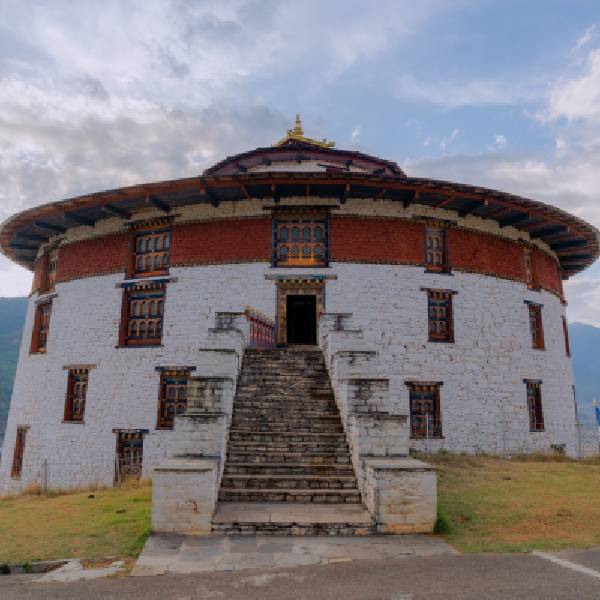After a hearty Bhutanese breakfast at your hotel, prepare for a full day of exploration through Thimphu’s vibrant cultural and artistic heritage.
Handicrafts Emporium & Local Craft Shops
Begin your day at the Government-run Handicrafts Emporium, where you can browse a rich display of traditional Bhutanese arts. Here, and at surrounding craft stores, you'll find hand-woven textiles, thangkha scroll paintings, ceramics, wood and slate carvings, intricate masks, and locally made jewelry—ideal for both souvenirs and cultural appreciation.
Zorig Chusum – The Painting School
Next, proceed to the Institute for Zorig Chusum, commonly known as the Painting School. Here, students undergo a six-year training in Bhutan’s 13 traditional arts, from embroidery to sculpture and religious painting. Observe them at work, offering you a glimpse into how Bhutan’s timeless artistic traditions are passed from generation to generation.
(Note: Closed on Sundays and government holidays)
Traditional Medicine Institute
Dive into Bhutan’s unique approach to healthcare with a visit to the Traditional Medicine Institute, where ancient medical texts and herbal practices still guide the preparation of natural remedies today.
Bhutanese Paper-Making Factory
Stop by a traditional paper factory to observe the crafting of Bhutanese paper, made from the bark of the daphne plant—a sustainable practice with roots in Buddhist monastic tradition.
Folk Heritage Museum
Gain insight into Bhutanese rural life at the Folk Heritage Museum, which recreates a typical household of the past, complete with farming tools, kitchen implements, and household artifacts, illustrating the country’s agrarian roots and enduring customs.
National Textile Museum
Explore Bhutan’s renowned weaving culture at the National Textile Museum, which displays beautifully handwoven garments, royal attire, and ceremonial cloths. This visit highlights the deep symbolism and skill behind each weave and pattern.
Takin Preserve
Visit the Takin Sanctuary, home to Bhutan’s national animal—the takin. This peculiar-looking creature, part goat and part cow, is steeped in legend and plays a central role in Bhutanese mythology.
Tashichho Dzong
Conclude your day at Tashichho Dzong, the majestic “Fortress of the Glorious Religion.” This architectural masterpiece exemplifies traditional Bhutanese design and serves as the summer residence of the central monastic body, as well as the seat of Bhutan’s government ministries and the King’s throne room. As the sun dips behind the surrounding hills, take a quiet moment to appreciate the dzong’s spiritual presence and its vital role in the country's religious and political life.
Hotel
B/L/D




